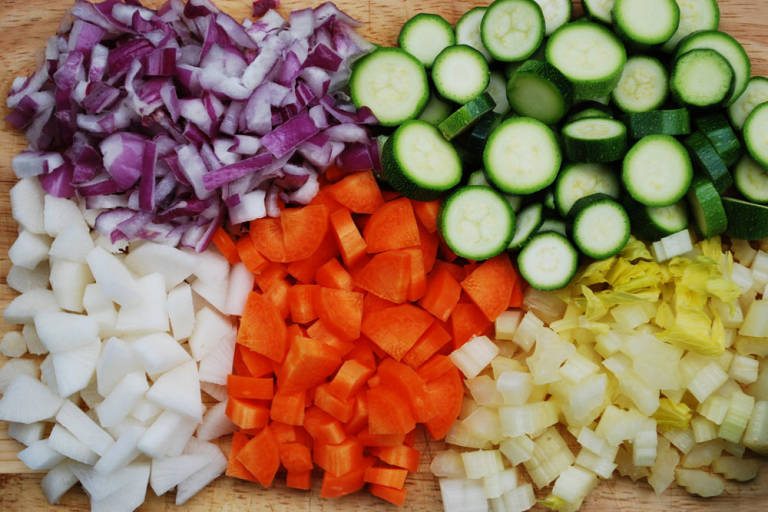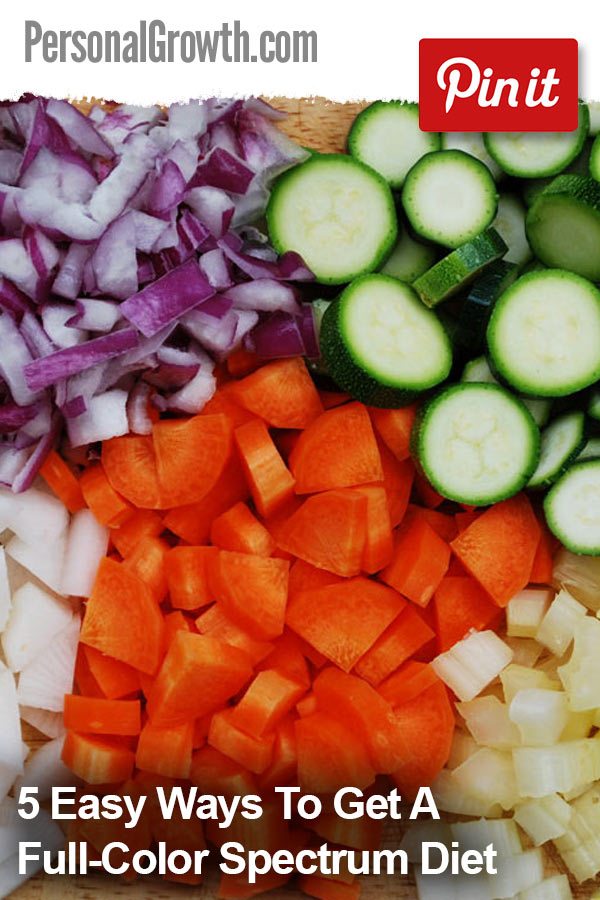

You probably make it a point to eat your vegetables, like most of us who want to be healthy do.
But beyond just seeing them praised in the old food pyramid, you may not know why vegetables are such an important part of our diets. It’s largely because of powerful phytonutrients, which are plant-based chemicals found in fruits, veggies, whole grains, herbs, nuts, legumes and spices.
Unlike the macronutrients you’ll find in things like fats and proteins, phytonutrients aren’t considered absolutely critical to our survival. However, as WebMD reports, phytonutrients are actually necessary to help ward off chronic illnesses, such as type 2 diabetes, some brain disorders and cancer.
There are some common phytonutrients you’ve probably already heard of, such as lycopene in tomatoes and beta-carotene in carrots. Resveratrol is what gives red wine a good name. But there are many other phytonutrients out there, to the tune of more than 25,000, according to Live Science.
Luckily, you don’t need to take a ton of supplements to get them in. It’s the phytonutrients that lend color to the plants they’re in, so if you just eat a wider color spectrum of plant-based foods, you can get the diversity you need.
Phytonutrients In The Proverbial Nutshell
Epidemiological studies do suggest a strong link between health and plant-based diets, but researchers are still working on discerning the exact role of phytonutrients. Dozens of phytonutrient families, such as sapnoids, polyphenols and carotenoids, work together at the genetic and cellular levels, so their functions aren’t as easily identified.
What researchers do know is that phytonutrients play three significant roles:
• They act as antioxidants
• They have the ability to set off positive gene expression, turning good genes “on” and bad genes “off”
• They lend support to specific functions and/or body structures. Lutein found in green veggies, for instance, builds in the back of your eye and boosts visual health.
With phytonutrients being so important, it’s vital that your diet essentially contains the full-color spectrum when it comes to plant-based foods. Here are five ways to get a wide variety of these plant-based chemicals into your diet without having to add any supplements.
1. Pile On The Produce
Try to get at least nine servings of fruits and vegetables daily. While that may seem like a lot, a serving is less than you think.
One serving of cooked vegetables is half a cup, while a serving of raw vegetables is one cup. A medium-size fruit is about one serving. In the end, you’ll need to add about three to four serving of fruits and vegetables to each meal to reach your goal. You can even go for more taste variety, since phytonutrients are found in legumes, nuts, seeds, whole grains and even some spices and herbs.
2. Eye Colorful Foods
Most processed foods are white, yellow and tan unless they have coloring added in. But you need the full spectrum in your diet, which is yellow, orange, red, green, white/tan and blue/purple, from plant-based foods on a daily basis. If you feel stuck, you can pick fruits and veggies based on colors you know you’re not really getting into your daily diet.
3. Become More Adventurous
Part of the reason why people often don’t have varied diets is because they tend to stick to the same foods. While you don’t have to give up your favorites, you can make getting the full spectrum easier by trying a new food every week.
It’s likely there will be some new things you don’t like, and that’s totally fine, but don’t give up just because a few things didn’t suit your personal taste. You may just find some new favorites while you’re experimenting.
Try a new source if you’re running out of foods to try and/or are having a hard time finding new things. Your favorite supermarket, for example, probably has limits to its selection, so you’ll need to go elsewhere for a variety of offerings. Natural food stores and local farmers markets are good places to start your hunt for new fruits and veggies.
4. Play With Combinations
You can get enhanced benefits from eating some plant foods in combination. When you pair black pepper and turmeric, for instance, the level of curcumin from the turmeric available to your body skyrockets, as reported by Nutrition Facts.
Curcumin is a strong antioxidant with anti-inflammatory effects on the body. You can blend turmeric and black pepper in olive oil and use the combination to season a veggie, such as cauliflower.
Research combinations to get the most bang for your food-eating buck. There are free online resources available, and you can also look up this information in the heath/nutrition section of your local library.
5. Be A Little Creative
Switch out some of your usual standbys with versions that are more phytonutrient-dense. For example, you can use purple or orange cauliflower instead of the typical white. For potatoes, try mashing or dicing and baking sweet or purple ones in place of the traditional white. With rice, aim for trying brown, black and purple instead of your normal white.
Quick Kitchen Tips
Once you’re more comfortable with diversifying your diet spectrum, you may be wondering how to cook them. Some, like most fruits, are better raw while others, such as mushrooms and spinach, are more nutritious if they’re cooked.
This is because some plant compounds are destroyed when you cook them, but other compounds are harder for your body to fully absorb if delivered in the raw form.
The general rule is to use the rainbow rule: cook food until it’s at its brightest hue. For instance, when your broccoli reaches that bright green when you’re sauteing it, that’s the best time to eat it.
There is some research that has indicated organic fruits and vegetables often have more phytonutrients than non-organic ones. While the jury is still out on why, it could be because plants use bioactive compounds to defend against things like pests. This means produce protected by pesticides may not need to develop as many bioactive compounds as non-protected organic produce does to survive.

Overall, your best chance at full-spectrum diet success is a commitment to trying new things and making sure you stay on top of your diet changes. Keep a list of what you eat during a week and any new additions to help you remember what colors you’ve consumed and so you can identify what you’ve missed. By keeping a food diary, you’ll be well on your way to having a diet that is completely rainbow in no time.

